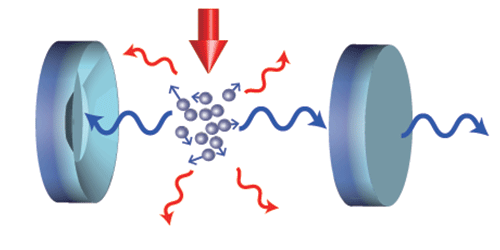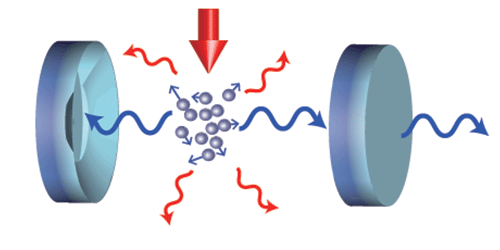Cooling Multiple Atoms in a Cavity
Laser cooling can chill atomic gases to near absolute zero, but it tends to work only with specific types of atoms. Cavity cooling is a more generic method that has successfully been used to cool single atoms, nanoparticles, and mechanical oscillators. A group at the Massachusetts Institute of Technology, Cambridge, led by Vladan Vuletić has now demonstrated cavity cooling of a few hundred atoms, perhaps opening the door to molecules, which have largely thwarted laser cooling techniques.
Most optical cooling methods rely on a light-induced force that is tuned to selectively remove energy from the target object. In Doppler cooling, for example, the light-induced force is based on the discrete absorption of light at a specific transition frequency, which is shifted to pick out objects moving toward the light source. The problem, however, is that many atoms and molecules do not have “closed” transitions that allow a repeating cycle of absorptions.
Cavity cooling does not depend on discrete absorption but utilizes continuum scattering for its light-induced force. Normally, the outgoing photon from such a scattering interaction has a range of frequencies, but inside a cavity the scattering spectrum narrows to a specific frequency corresponding to a cavity resonance. To use this selectivity for cooling, one tunes the resonance so that the outgoing photons take energy away from the target object. Cavity cooling of multiple atoms requires strong atom-cavity coupling as well as a trapping mechanism to localize the atoms in the cavity. With their cavity system, the researchers managed to cool a small cloud of cesium atoms to 10 K. The team expects that further optimization of their method could allow cooling of an ensemble of molecules in many different rotational and vibrational states.
This research is published in Physical Review Letters.
–Michael Schirber
Michael Schirber is a Corresponding Editor for Physics based in Lyon, France.





